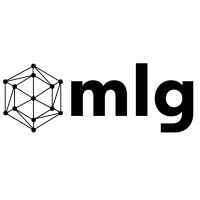|
|
|
Security |
|
|
|
|
"Block Security Protocol" (BSP)

Employs a BSP to implement the signature function on each data bock during PoA cosnensus. Only the blocks with authorized signatures can be mined and accepted.
|
Public Blockchain with security features built in.
Lamport digital signature algorithm. Claims to be resistant to quantum computer attacks.
Customized P2P network with data storage encryption, location transparency, source nontraceability
Merkle Patricia Trie data structure

Although the hash algorithm built into Bitcoin and Ethereum is secure with todays technology from brute force attacks, quantum computing may support enough computational power to compromise these algorithm.
|
Membership Service Provider - pluggable interface that supports customizable credential architectures and certificate authorities
Concrete identity format
User credential validation
User credential revocation
Signature generation and verification

For more information:
http://hyperledgerdocs.readthedocs.io/en/latest/security_model.html
|
|
|
|
Permissioned Aspects

Only permissioned parties can view the raw transactional data stored in the public blockchain. To all others, it will be hashed and secured.
Anyone can become a node, but there is a hard cap of 101 Authority Nodes. It requires a great deal of transparency and public capital to become a node.
|
Permissionless

|
Consortium
Permissioned, private network.

To enable permissioned networks, Hyperledger Fabric provides a membership identity service that manages user IDs and authenticates all participants on the network. Access control lists can be used to provide additional layers of permission through authorization of specific network operations.
|
|
|
|
Yes

Transaction Data Privacy Protocol (TxDP): Ensures privacy of transaction data.
|
Based on zero knowledge proof. Hides the send, receipt address and transfer amount.

Similar in function to the zk-SNARK feature Ethereum added during their Metropolis release.
|
Private Channels

A Private Channel is a subnet communication between two or more parties in the network that performs a private and confidential transaction.
|
|
|
|
Algorithms |
|
|
|
|
Proof of Authority

Consists of 101 Authority Nodes that are controlled by separate, self-interested entities. Due to the variety of companies, this will secure the network and ensure a trustless environment. PoA allows for a higher number of TPS than PoW and PoS, meaning VeChain can support up to 10,000 TPS.
|
Fast Paxos PoS variant.
The consensus of TRON adopts a three-step strategy.

1. Kafka-based technology system: implement a centralized consensus algorithm.
2. Raft-based distributed consensus mechanism: realize the centralized and distributed leapfrogging. Improves network function/distribution and lays the foundation for distribution with no logical center.
3. Consensus mechanism of Proof of Stake and realize the Byzantine Fault Tolerant Consensus.
|
Multiple options:
Pluggable Framework
No-op (no consensus)
PBFT

PBFT - Practical Byzantine Fault Tolerance
|
|
|
|
Efficiency |
|
|
|
|
No data

|
Moderate

|
Varies

Depends on implementation
|
|
|
Block Confirmation Time
Details
|
Fast

Set during launch at 10 seconds, and will be iterated after use.
|
Fast

|
Varies

Depends on implementation
|
|
|
|
Development |
|
|
|
Proprietary Codebase
Details
|
Open source with proprietary applications

https://github.com/vechain
|
Open source but goverened by the TRON organization

Built on Ethereum, but planning to move to own main net in June 2018
|
Open Source

https://github.com/hyperledger/fabric
|
|
|
|
General |
|
|
|
Blockchain / DLT type
Details
|
Public

|
Public

Open source public blockchain fuelled by cryptocurrency.
|
Federated / Consortium, Permissioned Network

Federated Blockchains operate under the leadership of a group. As opposed to public Blockchains, they don’t allow any person with access to the Internet to participate in the process of verifying transactions. Federated Blockchains are faster (higher scalability) and provide more transaction privacy - important aspects for Enterprise focused deployments
|
|
|
|
Yes

VeChain exists as a platform to be developed on. Meaning the core features and services can be applied in a number of industries. Some utilizing IoT, some just using the consensus mechanism.
|
Similar to Ethereum:
Generic, with DApp and Smart Contract support for wider applications

It is not modularity that stands out but the provision of a generic platform suitable for various types of transactions and applications
|
Modular Architecture is a core focus of Platform

|
|
|
|
50 - 10,000 TPS

50 TPS is currently the maximum. Once VeChain moves to thier mainnet, they plan to scale their TPS to 10,000. This will enable Enterprise level support for financial and sensor data.
|
Currently supports 15 TPS as it is on the Ethereum platform. Will be able to support up to 1000 TPS once main net launches

Scalability is a core feature for TRON. They want to be able to support large commercial projects, while minimizing transactions fees and time.
|
1000 TPS capacity for now. Developed with scaling in mind. Provides flexibility in size and throughput depending on the implementation.
A Performance and Scalability Workgroup exists within the community to discuss, research, and identify key use cases and metrics for all blockchains.

Hyperledger Fabric is built on a modular architecture that separates transaction processing into three phases: distributed logic processing and agreement ('chaincode'), transaction ordering, and transaction validation and commitment. This separation confers several advantages: Fewer levels of trust and verification are required across node types, and network scalability and performance are optimized.
|
|
|
|
Depends on implementation

|
Varies

https://tronscan.org/#/blockchain/stats
|
500 transactions per block

|














